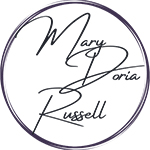I’m blind-tired, fighting a cold, and struggling with internet access, but this trip has already been useful. The main industry in Tombstone was mining — something almost overlooked in most portrayals of the events in 1881. So naturally, that’s what interests me most.
Late this afternoon, I toured the Goodenough Mine, which has been excavated like an archeology site by Carey Granger. I adore terms of art and learned a lot of wonderful mining vocabulary. A borrasca is the opposite of a bonanza — when a vein of ore peters out, it’s a borrasca. Stopes and rolls, single and double jacking. Cribbing, strap rails. Vug — a gigantic geode inside a mine. Drifts and crosscuts and winzes. Best of all: “The vein pitched out and quit on us.” I love that sentence!
Tomorrow I’m driving to Millville and Charleston, to see if I can find the remains of the ore mills and the town that grew up across the San Pedro River to service the miners. Charleston is significant for The Cure For Anger. The day of the Benson Stage holdup, Doc Holliday rode to Charleston because there was supposed to be a high stakes poker game there. The game was over by the time he arrived, so he turned around and rode back to Tombstone — about 20 miles total. He got back very late that night, and came under suspicion because he didn’t have a strong alibi for where he was when the stage was held up. Two men were killed during the robbery, so this was very serious.
I drove through Benson this afternoon, and I’m beginning to build a mental map of the area. The terrain in Cochise County is a jumble: mountains, sand flats, a crumbly failed sandstone… Every mile or so, you’re in a different ecological zone, and the plants change with the altitude. Lots to take in, for a Midwest girl.
I’ve got to get some sleep! But I wanted to take advantage of this episode of internet access.
